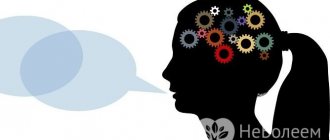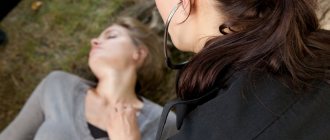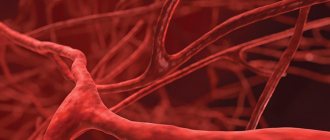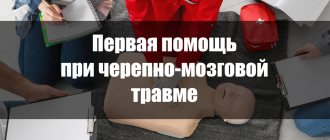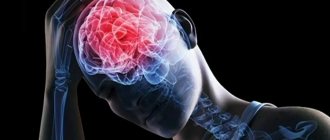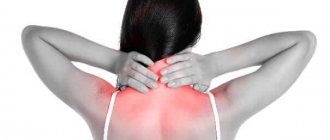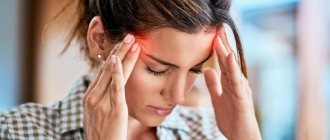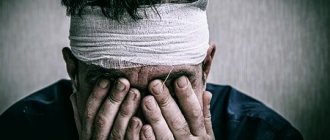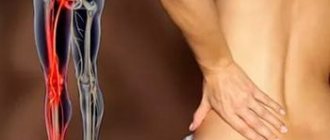Home — For the public
- Map of medical organizations
- Vaccination
- Clinical examination
- Fluorography
- Addresses and opening hours of clinics
- Emergency rooms
- Oncology
- Where to take an HIV test
- Healthy child's office
- Services
- Prevention of CVD
- Disease Prevention
- World Patient Safety Day
- Newspaper "Medical News"
- specialist
- School of Health
— Disease prevention
- HIV infection
- All about vaccination
- All about proper nutrition
- Hepatitis
- Flu
- Dementia
- Schoolchildren's health
- STD
- Tick-borne encephalitis
- Whooping cough
- Measles
- Legionellosis
- Meningococcal infection
- Oncology
- Acute intestinal infection
- Pediculosis
- First aid
- Pneumococcal infection
- Pneumonia
- Prevention of rabies
- Dependency Prevention
- Rotavirus infection
- Diabetes
- Cardiovascular diseases
- Injuries
- Tuberculosis
- Tularemia
- Physical activity
- Obstructive pulmonary disease
- Exotic infections
- Ecology
- Why is swimming in ponds dangerous?
— Cardiovascular diseases — First aid for stroke and heart attack
Timely and correctly provided first pre-hospital emergency care for the development of myocardial infarction and stroke is the factor that in many cases determines the outcome of these conditions that are dangerous to the health and life of the patient. Often, the lack of such correct assistance, which should be provided immediately after the development of these dangerous vascular accidents is suspected, becomes the cause of disability or death of people.
Doctors strongly recommend that all people at risk of developing these dangerous conditions know the first signs of stroke and myocardial infarction and be able to provide first aid. Almost every person should have such a reminder, because it can save someone’s life. Heart attack and stroke usually occur suddenly and at this moment it is necessary not to get confused! These simple steps can help save the patient and prevent the development of many complications or death.
The first signs of myocardial infarction: when to take action?
Myocardial infarction is an acute condition that occurs due to coronary heart disease and is accompanied by severe circulatory failure in the coronary vessels and necrosis of part of the heart muscle tissue. In 10–12% of cases it is life-threatening for the patient. More often, heart attacks occur in men over 60 years of age, but after menopause, women are also at risk. In recent years, there has been a significant “rejuvenation” of this condition and the development of anesthesia of the heart muscle in 20-30 year old young people is observed more and more often.
In 90% of patients with coronary artery disease, a heart attack is provoked by coronary artery thrombosis caused by atherosclerosis. The following reasons can also provoke coronary circulatory insufficiency:
- thrombosis and spasm of coronary vessels;
- heart injuries;
- tumors or metastases.
- The risk group for developing a heart attack includes people with the following pathologies and conditions:
- atherosclerosis;
- hypertonic disease;
- obesity;
- diabetes;
- increased levels of LDL in the blood;
- adynamia;
- bleeding disorders;
- smoking and alcoholism;
- excessive psycho-emotional and physical stress.
Usually the attack begins suddenly, but in some patients there may be a pre-infarction condition, manifested by an increase in temperature, tachycardia and arrhythmia, cyanosis of the mucous membranes, severe pallor, an increase in blood pressure with its subsequent decrease. This condition can last from several hours to several days or weeks.
The main sign of a heart attack is severe pain in the chest, which is prolonged. It differs from the pain that occurs with angina pectoris in that it manifests itself for more than 15 minutes and is not eliminated even by repeated administration of Nitroglycerin. Usually pain occurs after physical or psycho-emotional stress.
Immediate first aid actions for a heart attack should be performed immediately after the following symptoms occur:
- severe and prolonged pain behind the sternum of a burning, stabbing, tearing, squeezing nature (it is present for half an hour and is not eliminated or is only partially relieved by the usual intake of Nitroglycerin);
- severe anxiety and fear of death;
- pain radiates to the left (sometimes to the right) arm, shoulder blade, interscapular area, neck, teeth;
- cold clammy sweat;
- dizziness or fainting;
- pallor;
- nausea;
- difficulty breathing and shortness of breath (sometimes);
- rapid and arrhythmic pulse.
In approximately 20% of cases, myocardial infarction occurs in an atypical form and is not accompanied by pain in the heart area. In such cases, symptoms may be as follows:
- with an atypical location of pain - it is concentrated in the left hand, at the tip of the little finger of the left hand, in the cervicothoracic spine or in the scapula, in the area of the lower jaw or neck, the pain syndrome is complemented by typical manifestations of a heart attack;
- with the gastric type of attack - indigestion and abdominal pain;
- with asthmatic – shortness of breath and suffocation, dry cough;
- with arrhythmic – rapid and arrhythmic pulse;
- with cerebral – confusion, dizziness, nausea and vomiting, speech disorders;
- with edema – severe weakness, shortness of breath, rapid increase in edema;
- if painless - discomfort in the chest, weakness, increased sweating.
The first signs of a heart attack and any suspicion of its development are a reason to call an ambulance. The operator must be informed about the symptoms and the possibility of a heart attack. After this, you should immediately begin providing pre-hospital emergency care.
How to protect yourself from heart attack and stroke
The development of one of the dangerous vascular pathologies - stroke or heart attack - is increasing every year. Men, hypertensive patients and those who suffer from endocrinopathies are especially at risk. People whose close relatives have suffered from cardiovascular diseases are also at increased risk.
Fortunately, the risks of both stroke and heart attack can be significantly reduced. To do this, you don’t need to perform any complex actions or completely change your usual schedule. We will talk about those measures to prevent stroke and heart attack that will minimize the risk of both vascular (vascular) disasters.
Risk factors for both diseases
Prevention of any pathology is based on the maximum elimination of risk factors. They are:
- Factors that cannot be influenced. These are age, gender (men under 50 get sick more often, then the numbers become equal), genetic predisposition to cardiovascular pathologies.
- Factors that can be modified: prevention of stroke and heart attack is aimed specifically at their elimination. This is smoking (including hookah or vaping), high cholesterol, hypertension, alcohol abuse, physical inactivity, consumption of trans fats and simple carbohydrates in large quantities, excess body weight (especially with an increase in the layer of abdominal fat), diabetes mellitus and others diseases of the endocrine system, hypercoagulable states, increased levels of homocysteine (a special sulfur-containing acid), peripheral vascular diseases, connective tissue pathologies.
Of course, each of the vascular accidents has its own predisposing factors. Thus, necrosis of an area of the heart muscle occurs mainly in those people who have hypertrophied the wall of the left ventricle, sometimes the coronary vessels spasm, and amyloidosis has developed. Risk factors for stroke are predominantly heart rhythm disturbances, hemoglobinopathies, brain tumors, endocarditis or rheumatic heart valve disease. However, both diseases are based on a similar development mechanism. This is a blockage of an artery supplying the heart or brain with a blood clot that either formed on the surface of an atherosclerotic plaque or “flew off” from the heart or veins of the lower extremities.
Since both the mechanism and most of the risk factors are identical, there are many similarities in measures to prevent stroke and heart attack. Let's talk about this.
Non-drug preventive measures
This:
- Nutrition. Clinical studies in the prevention of stroke and heart attack have confirmed the effectiveness of a low-calorie diet, which will be rich in fruits, vegetables and nuts, and will also include the mandatory consumption of fish and garlic. There should be almost no foods rich in animal fats and trans fats in the diet. The amount of table salt also needs to be reduced - to 3-5 g per day.
- Physical activity. It is optimal to calculate your individual daily load so that it lasts at least 30 minutes a day, and the heart rate does not exceed 60% of the calculated maximum frequency.
- Weight loss. The body mass index should not exceed 25–27 kg/m2, otherwise the weight becomes an additional burden on the blood vessels. To reduce it, you need to choose a therapeutic diet. You may also need drugs to prevent stroke and heart attack, which will reduce your appetite.
- Independence from bad habits. Nicotine and ethanol damage all layers of the vascular walls and increase blood viscosity. Giving up these bad habits leads to restoration of the cardiovascular system within three years (maximum changes occur in the first 3–6 months). This reduces the risk of vascular accidents by 60%.
- Correction of psychological state. Based on clinical research data, anti-stress programs, psychotherapy or work with a psychologist for stress, depression, and loss of social support reduces the risk of vascular accidents by 34%, and a second heart attack by 29%. In some cases, drugs from the group of antidepressants were prescribed for psychological prevention of stroke and heart attack.
Medicinal preventive measures
Various drugs are used to prevent the development of cardiovascular accidents. In the last section, we already talked about medications that help reduce appetite and restore emotional balance: they are not required to be used, but only help reduce risk factors. But there are also drugs for the prevention of stroke and heart attack that actually reduce the risks of these diseases. They are recommended by the World Health Organization.
Antihypertensive drugs
There is a close relationship between vascular accidents and blood pressure levels. Thus, an increase in the “lower” pressure figure by only 7 mm Hg. Art. increases the risk of heart attack by 27%, death of a part of the brain by 42%, and also more likely leads to the development of heart failure and kidney pathologies. Therefore, an important step in the prevention of stroke and heart attack is lowering blood pressure.
People who have a low risk of vascular accidents (no bad habits, excess weight, diabetes) need to reduce their blood pressure if it exceeds 140/90 mmHg. Art. For those who have diabetes, chronic kidney disease, or cardiovascular pathologies, numbers should not be allowed above 130/90 mmHg. Art.
For such prevention of stroke and heart attack, drugs can be used from different groups. Basically, these are angiotensin-converting enzyme blockers (ACEIs). Such drugs not only help maintain blood pressure at target values, but also prevent changes in the myocardium that occur with hypertension and coronary artery disease.
In addition to ACE inhibitors, beta blockers can be used. Their task is to reduce the heart's need for oxygen. The drugs slow down the heart rate. Non-selective representatives of this group are not prescribed for bronchial pathologies.
Other antihypertensive drugs for the prevention of stroke and heart attack may include diuretics. They are prescribed mainly when only the “lower” pressure increases. They are effectively combined with ACE inhibitors, reducing the risk of vascular accidents.
Lipid-lowering therapy
Based on the results of multicenter studies, effective prevention of stroke and heart attack requires a mandatory reduction in cholesterol and low-density lipoproteins. For this purpose, drugs from the groups of statins or fibrates are used.
When prescribing lipid-lowering therapy, the performance of the liver, kidneys, and heart is carefully monitored. Taking these drugs continues until the cholesterol level reaches 1.8 mmol/l, if no side effects occur.
Often, statins or fibrates are supplemented with the use of omega-3 fatty acids. These substances are especially effective for secondary prevention - preventing recurrence of a vascular accident.
Antithrombotic therapy
The key role in the development of cardiovascular accidents is played by platelet activation. Therefore, in people at high risk, antiplatelet therapy is a necessary condition for prevention.
The standard of care for such therapy is aspirin, used in low doses (50–100 mg/day). It inhibits the enzyme cyclooxygenase, which blocks the formation of a substance called thromboxane A2 in platelets. In this case, blood platelets do not settle in areas of the vessels where there are atherosclerotic plaques or where there is a low blood flow rate. Consequently, then there will be no substrate that can “come off” and clog one of the arteries - feeding the brain or heart.
One of the representatives of such drugs for the prevention of stroke and heart attack is Thrombo ACC 50 or 100 mg. It is acetylsalicylic acid (ASA). Each tablet containing ASA is film-coated with an enteric coating, and this is not without reason. According to a number of studies, the use of an enteric form reduces the risk of complications from the gastrointestinal tract and improves tolerability of the drug during long-term therapy.1 Acetylsalicylic acid helps reduce the risk of blood clots and directly prevent myocardial infarction and stroke.2
*There are contraindications, please consult a specialist before use
1B. V. Kosarev, S. A. Babanov “Clinical pharmacology of modern antiplatelet agents and their place in the pharmacotherapy of coronary heart disease and associated conditions”, Breast Cancer Cardiology, No. 5, 2013
2R.
M. Gazizov, E. A. Atzel “The use of acetylsalicylic acid for primary and secondary prevention of cardiovascular diseases” Breast Cancer Medical Review, No. 11, 2014 p.827-831 RUS-GPS-THR-NON-12-2018-1415
How to help with myocardial infarction: first aid
The algorithm for providing emergency care for myocardial infarction is as follows:
- Place the patient on his back or give him a comfortable semi-sitting position. Place a cushion under your neck.
- Calm the patient, eliminate physical activity and ensure the most comfortable temperature conditions and fresh air flow. You should speak to the person in a calm and even tone, without showing signs of panic or making sudden movements.
- Measure blood pressure if it is less than 130 mm Hg. Art., then it is better to refuse taking Nitroglycerin. Count your pulse for 1 minute.
- Give the patient a sedative: Corvalol, Valocordin, Motherwort tincture, etc.
- Give the patient a tablet of Nitroglycerin or another nitrate-containing drug (Isoket, etc.) under the tongue, and after five minutes repeat taking this drug if the blood pressure is at least 130 mm Hg. Art. Before the ambulance arrives, you can give 2-3 tablets. If after the dose the patient experiences severe throbbing pain in the head, the dose should be reduced to 1/2 tablet.
- If there are no contraindications, grind 150-300 mg of Acetylsalicylic acid and give it to take with a small amount of water.
- If the pulse does not exceed 70 beats per minute, then give a single dose of one of the adrenergic blockers (for example, 50 mg of Atenolol, Metoprolol).
- Mustard plaster can be applied to the area where pain is localized. Be careful not to burn your skin!
- After the arrival of doctors, you should inform them of your blood pressure and pulse, list the symptoms observed in the patient and the medications he has taken.
Being scared can sometimes be good
Only at first, completely inexperienced glance, myocardial infarction and stroke can be called “sudden” diseases. Changes in the body that lead to this sad outcome accumulate over years, decades, and for a long time a person may not pay attention to the alarming symptoms that appear: a periodic rise in blood pressure, shortness of breath and a feeling of tightness in the chest during physical or nervous stress, etc.
It would seem that it’s time to understand the reason for these sensations and urgently change something in your usual way of life. But some people don’t want to seem “weak,” some live by the principle: “the less you know, the better you sleep,” and some simply “don’t have time.”
But sometimes, in order to encourage a person to take care of his health, he just needs to be scared. Here are just a few sad and alarming numbers.
Every 10th Russian of working age suffers from one or another cardiac disease.
Every year in Russia there are 300–400 thousand strokes. Russia ranks first in the world in terms of mortality from this disease.
Stroke claims 3.5 times more lives than myocardial infarction.
Eight times more men die from cardiovascular accidents in Russia than in the United States.
According to the All-Russian Scientific Society of Cardiologists, mortality from diseases of the cardiovascular system has increased 1.5 times over the past 15 years.
The first signs of a stroke: when to take action?
A stroke is a condition caused by a significant disruption of cerebral circulation, leading to severe spasm of an artery or its rupture. This vascular catastrophe is provoked by significant blockage of blood clots or spasm of an arterial vessel. More often it develops in men after 45–50 years. Stroke is more common in people over 50 years of age and is just as likely to occur in women after menopause as in men.
People at risk for developing stroke include people with the following pathologies and conditions:
- atherosclerosis;
- hypertonic disease;
- increased levels of total and “bad” cholesterol and triglycerides;
- diabetes;
- obesity;
- hypothyroidism;
- bleeding disorders;
- adynamia;
- unhealthy diet (predominance of fast food, fried, fatty foods, flour, baked goods and carbonated drinks in the diet);
- frequent stress, lack of sleep and overwork;
- congenital and acquired vascular pathologies;
- smoking and alcoholism;
- taking hormonal contraceptives and drugs that increase cholesterol levels;
- hormonal disorders;
- age after 45 – 50 years;
- menopause period.
Severe impairment of cerebral circulation leads to vasospasm, insufficient blood supply to a certain area of the brain and the onset of ischemic stroke. In other cases, a blocked blood vessel ruptures and blood flows into the brain tissue, a condition called hemorrhagic stroke. The manifestations of these vascular accidents largely depend on the location of the affected brain tissue.
The first signs of a stroke are usually the following:
- severe weakness, lethargy, drowsiness;
- dizziness (up to fainting or coma);
- speech disorders;
- spatial disorientation;
- unsteadiness of gait;
- impaired coordination of movements and balance;
- displacement of the eyeballs to the side;
- numbness followed by paralysis of an arm and/or leg on one side or another of the body.
It is very important to recognize the onset of a stroke in time. Its symptoms appear suddenly. It is important not to get confused and not lose time to provide necessary and vital first aid.
Experts recommend not to forget such a stroke detection rule as FAST (or FAST):
- F (face – face). With a stroke, facial asymmetry is observed due to paralysis of the facial muscles. If you ask a patient to smile, the smile will be uneven.
- A (arm – hand). If you ask a person with a stroke to raise both arms, it will be noticeable that the limb on one side is significantly limited in movement due to numbness and paralysis.
- S (speech - speech). The patient should be asked to say the phrase: “I am healthy now.” With a stroke, speech will be slurred and slurred due to impaired articulation.
- T (time - time). All of the above-described disorders occur suddenly and sharply during a stroke. Their appearance is a signal to urgently call an ambulance!
Any suspicion of the development of a stroke indicates the need for medical assistance, and it should be provided in a specialized hospital. It should be remembered that after 3 hours the violations will become irreversible and can lead to severe disability or death.
Secondary prevention
The main task of secondary prevention is to reduce the likelihood of developing a recurrent stroke to a minimum. Basic measures:
- Regular monitoring of blood pressure and reducing it to normal levels if necessary.
- Changing your diet: it is important to reduce the amount of salt consumed, eat more vegetables and fruits, low-fat dairy products, eliminate fatty, fried and smoked foods, and alcohol.
- Normalize weight, exercise for at least half an hour every two days.
- Drug therapy especially for patients with signs of atherosclerosis and patients who have experienced ischemic stroke or transient ischemic attacks. Medicines help lower cholesterol and blood pressure, cope with inflammatory diseases and exacerbations of chronic diseases.
- Regular visits to a neurologist. The doctor can monitor changes in the patient’s condition, adjust therapy, prescribe medications or procedures, and give recommendations regarding hospitalization.
Everything's under control!
Prevention is a great thing, but you can’t do without medications during the rehabilitation period.
Despite all the differences, the root cause of heart attack and stroke is blockage of an artery by a thrombus: in the case of myocardial infarction - coronary, in the case of ischemic stroke - cerebral. A thrombus is a blood clot that forms around a cholesterol plaque and is attached to the wall of a vessel. It can partially or completely block a vessel in the brain or heart, thereby “cutting off oxygen” and bleeding part of the heart muscle or part of the brain.
Article on the topic
Unknown heart attack: what is “silent” ischemia and what does chest pain indicate?
So, an important group of drugs is represented by antithrombotic drugs, among which the well-known aspirin was and remains the most widely used and inexpensive. Its use reduces the risk of recurrent heart attack by 25% in women and by 19% in men, and the risk of recurrent stroke by 22% and 17%, respectively. Numerous scientific studies confirm the effectiveness and safety of this drug. However, recent research in Russia showed that only 80% of patients regularly take aspirin, even if it was prescribed by a doctor.
The next class of drugs, statins, are at the forefront of the fight against cardiovascular disasters: they help reduce the level of bad cholesterol (low-density lipoproteins). Doctors usually prescribe statins if your blood cholesterol approaches 3.4 mmol/L (130 mg/dL) or becomes higher. But only 30% of Russians who have suffered an ischemic stroke regularly take these medications. And many patients, after being discharged from the hospital, forget about treatment with statins, although doctors tirelessly remind them that they need to continue taking them, since the effect increases gradually over time. Think about these numbers - reducing the level of total blood cholesterol by only 10% reduces mortality from heart attack by 15%!
In Western European countries, 70% of patients regularly receive statins. A significant reduction in the number of deaths from cardiovascular accidents in Western Europe and the United States and an increase in life expectancy over recent decades are explained by the successful fight against high cholesterol levels.
